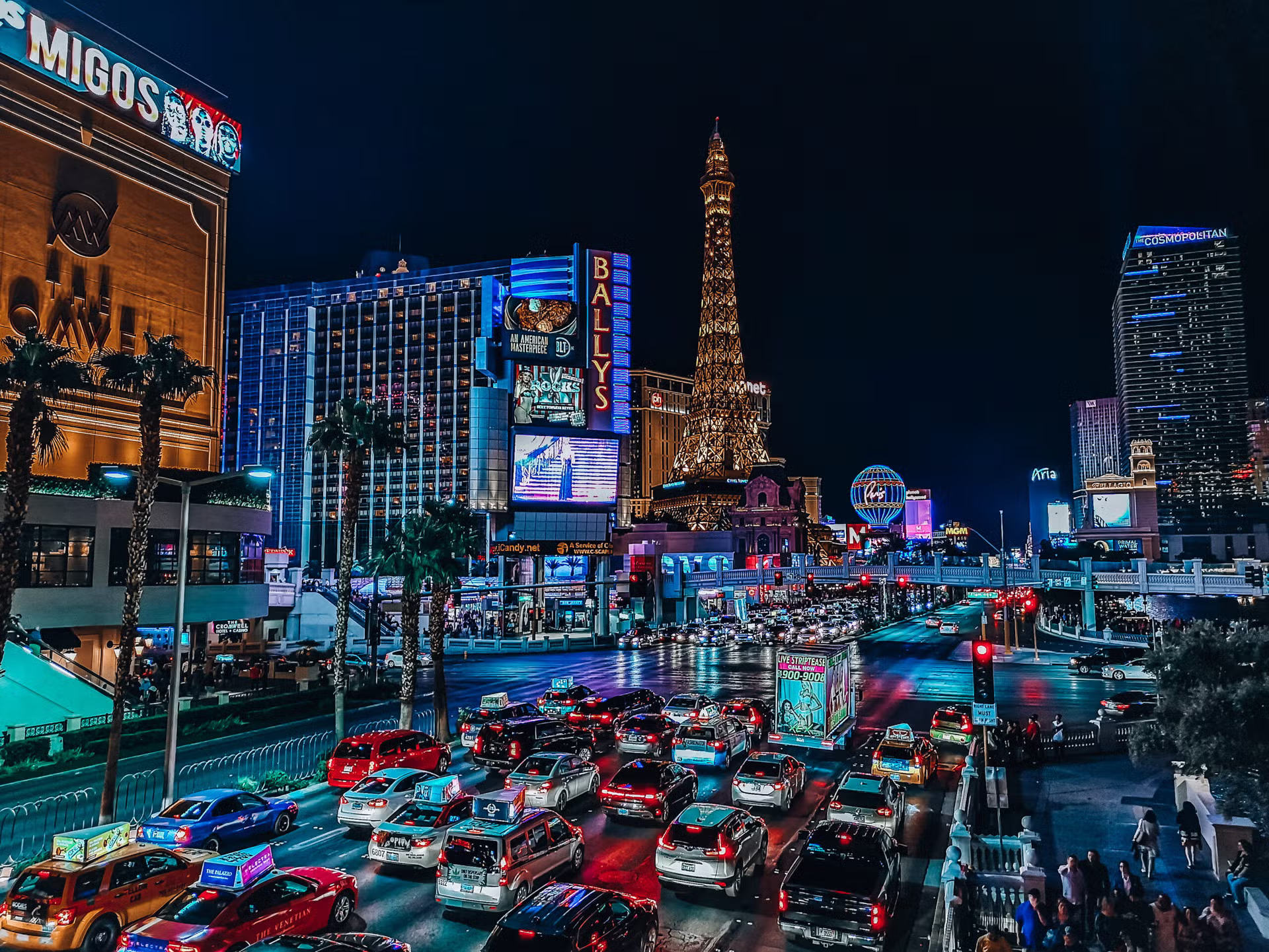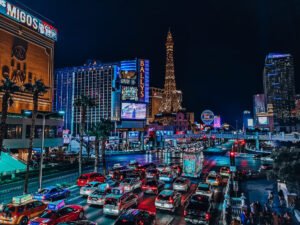The Las Vegas Strip, long synonymous with crowds, excitement, and non-stop action, is experiencing an unexpected transformation. At the north end of the famous boulevard, Resorts World Las Vegas—a $4.3 billion resort built in 2021 as the most expensive property in Sin City history—stood eerily quiet during a recent Thursday afternoon visit. This palatial 88-acre complex featuring huge pools, innovative technology, and three hotels offering 3,500 combined rooms should have buzzed with activity. Instead, many public spaces resembled a ghost town, reflecting broader Las Vegas tourism challenges that have dominated industry headlines throughout 2025. According to the Las Vegas Convention and Visitors Authority (LVCVA), visitor volume declined 11.3 percent year-over-year as of June 2025, with convention attendance down 10.7 percent, creating ripple effects across the entire Las Vegas hospitality industry from casino floors to restaurants and entertainment venues.
Understanding the Las Vegas Tourism Decline
The Numbers Behind the Slowdown
The June 2025 LVCVA report painted a concerning picture of Las Vegas tourism statistics across multiple metrics. Beyond the headline 11.3 percent visitor decline, the data revealed:
Room inventory decreased 2.3 percent Average daily hotel rates dropped 6.6 percent RevPAR (revenue per available room) plummeted 13.8 percent Room nights occupied fell 9.7 percent
These figures represent more than statistical anomalies—they reflect fundamental shifts in Las Vegas travel patterns and visitor behavior. For a city whose economy depends almost entirely on tourism, such declines raise questions about why is Las Vegas losing tourists and what the future holds.
Contributing Factors to the Downturn
Multiple factors contribute to the Las Vegas visitor decline 2025. The LVCVA attributes sluggish numbers to “persistent economic uncertainty and weaker consumer confidence”—economic headwinds affecting discretionary spending nationwide.
International travel patterns have shifted notably, with international tourists avoiding Las Vegas at higher rates than in previous years. Canadian travelers—historically significant visitors to Vegas—have particularly reduced their trips, citing various concerns about US travel destinations.
However, consumers themselves point to a different culprit: Las Vegas high prices. As costs for accommodations, dining, and entertainment have soared, many travelers find the city increasingly unaffordable, leading them to ask is Las Vegas too expensive now.
A First-Hand Look at Empty Las Vegas
Resorts World: A Case Study in Quiet
Walking through Resorts World casino during the afternoon revealed stark contrasts to traditional Vegas energy. The vast majority of gaming tables sat unused, with dealers standing idle. Slot machines remained silent. Only a small cluster of active tables showed any guest activity—a scene that would have been unthinkable during Vegas’s heyday.
The Famous Food Street Eats food court, designed to evoke an Asian night market atmosphere, highlighted the disconnect even more dramatically. Anyone who’s experienced authentic Asian night markets knows them as vibrant, bustling, chaotic spaces filled with people and endless food options. The Resorts World version presented the opposite: only three or four vendors remained open, with shuttered businesses dominating the space and empty tables throughout.
Returning at 5:30 p.m.—presumably dinner rush—revealed an unchanged scene. The same limited vendors operated, with minimal patron activity. This wasn’t a momentary lull; it represented a persistent reality of empty Las Vegas casinos 2025.
The District: An Indoor Mall Without Shoppers
Adjacent to the food court, The District—a cavernous indoor shopping area—appeared even more deserted. Nearly every retail business was closed, with barely anyone walking through the space. The eerie quiet stood in sharp contrast to typical Las Vegas energy, raising questions about Las Vegas businesses closing and the sustainability of such massive retail spaces without sufficient foot traffic.
The Venetian: Easier Access, Fewer Crowds
Even at The Venetian—one of Vegas’s premier properties—Las Vegas thin crowds were noticeable. Restaurants that previously required waits offered immediate seating. Walking through The Venetian shopping area, being the only customer in stores became common—an experience that long-time Vegas visitors would find remarkable.
For context, this visit occurred on a Thursday in October—admittedly off-season when kids are back in school and family travel decreases. However, the contrast with previous Vegas experiences during similar periods remained striking. The Las Vegas that used to be “crowded all the time” with a “non-stop, festive, party atmosphere” felt noticeably different.
The Price Problem: Vegas Inflation Reality
Breakfast Sticker Shock
Personal experience confirmed reports of Las Vegas expensive dining. A single breakfast at The Grand Lux Cafe in The Venetian cost $44 before tip—for coffee, sparkling water, and a bagel with salmon. No alcohol, no elaborate dishes, just standard breakfast fare at premium prices that left many asking how much does food cost in Las Vegas now.
Dinner Costs That Surprise
Dinner proved equally shocking. Three dim sum appetizers—small plates, not entrees—plus sparkling water at a Venetian Asian restaurant exceeded $80 before tip. For one person. No main course, no dessert. These prices reflect Las Vegas food price increases that have pushed dining costs beyond many travelers’ budgets.
Hotel Rate Increases
According to local Las Vegas news outlet 107.5, Strip hotel rates rose notably during the first quarter of 2025. MGM Resorts properties increased 3 percent, while Caesars Entertainment properties jumped 6 percent. January 2025 marked a milestone with average nightly rates approaching $200—a $30 increase since 2019.
Some reports suggest the average cost of a tourist weekend on the Strip has increased 25 percent according to a Las Vegas price index compiled by the Las Vegas Review Journal, though independent confirmation proves difficult.
Beyond Rooms and Food
The New York Times investigation into Las Vegas tourism challenges noted that soaring prices extend to everything: parking, bottled water, and entertainment. Resort fees—typically around $50 per night on top of room rates and taxes—have become standard. Sphere event tickets range from $109 to $349, while Las Vegas Raiders game tickets start at $297.
These costs have sparked widespread outcry that Las Vegas is too expensive, fundamentally changing the city’s value proposition for budget-conscious travelers wondering is Vegas worth visiting anymore.
Industry Perspective and Pushback
Competing Narratives
Not everyone agrees the Las Vegas downturn is as severe as reports suggest. Some travel industry insiders and travelers themselves argue that reports are overblown, pointing to specific busy periods and popular events that still draw crowds.
However, The New York Times reporter who investigated the situation found similar conditions: half-empty card tables in casinos, thin crowds on Fremont Street where entertainers perform, and nightclubs with no waiting lines—all confirming the Las Vegas empty narrative.
Finding Value in the New Las Vegas
Budget Options Still Exist
Despite rising Strip prices, Las Vegas tourism officials maintain that the city offers options for every budget. Travel professionals confirm this, noting that old Las Vegas prices and bargains persist for those knowing where to look.
The key lies in exploring Downtown Las Vegas rather than limiting stays to the Strip. Downtown Las Vegas restaurants and accommodations often cost a fraction of Strip prices, offering authentic Vegas experiences without premium price tags.
Silver Linings for Visitors
The lack of crowds provides unexpected benefits. Immediate restaurant seating, easier attraction exploration, and no nightclub lines offer advantages for visitors wondering what are benefits of visiting Las Vegas now.
Arte Museum—a fascinating, immersive experience—exemplifies attractions that become more enjoyable without crushing crowds. For travelers seeking to escape overtourism, current Las Vegas might offer an unexpected solution.
What This Means for Future Travelers
Planning Your Vegas Visit
For those asking should I visit Las Vegas in 2025, the answer depends on priorities and budget. Travelers willing to explore beyond the Strip can find reasonable prices and authentic experiences. Those expecting traditional Strip experiences should prepare for higher costs but fewer crowds.
When is best time to visit Las Vegas now includes considerations beyond weather and events—off-peak periods offer even better value and smaller crowds than before.
Long-Term Outlook
Las Vegas future tourism depends on addressing current challenges. The city must balance bringing crowds back while managing costs that have alienated budget-conscious visitors. Questions about will Las Vegas recover remain open as the industry navigates these unprecedented conditions.
The Bigger Picture
The Las Vegas tourism slump 2025 represents more than temporary setbacks. It reflects changing travel preferences, economic pressures, and questions about destination value propositions. While fewer visitors create challenges for businesses, they also offer opportunities for travelers seeking less crowded experiences.
Understanding these dynamics helps travelers make informed decisions about Vegas trips, whether seeking budget options in Downtown Las Vegas or willing to pay premium prices for Strip experiences with fewer crowds. The city that built its reputation on excess and crowds now offers a different experience—one that may appeal to different types of travelers.
At The Inspiring Insight, we believe informed travelers make better decisions. The Las Vegas situation demonstrates how destinations evolve and how savvy visitors adapt to changing conditions. Whether you’re planning your first Vegas visit or returning after years away, understanding current realities—from pricing challenges to crowd patterns—ensures better experiences aligned with expectations and budgets. For more destination insights, travel industry analysis, and practical planning guides that help you navigate changing travel landscapes, explore our complete collection of stories that transform travel challenges into opportunities for memorable journeys.



